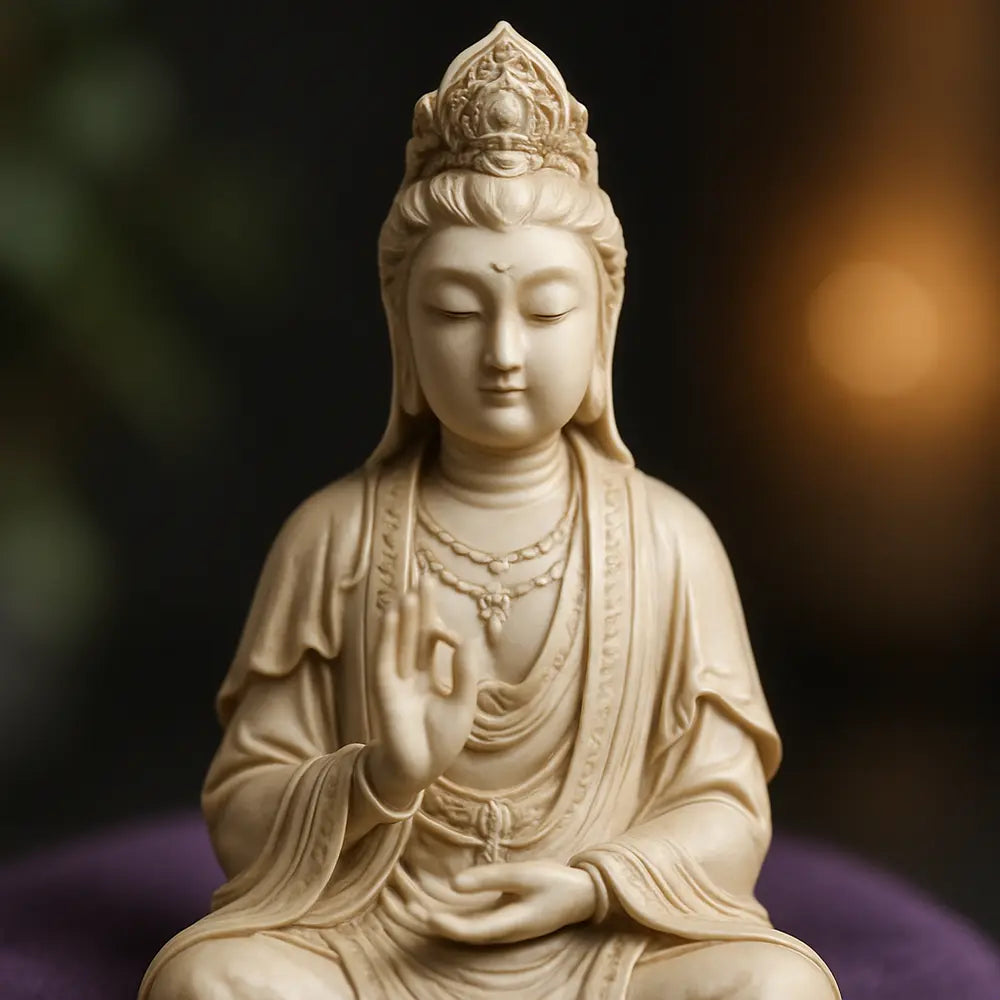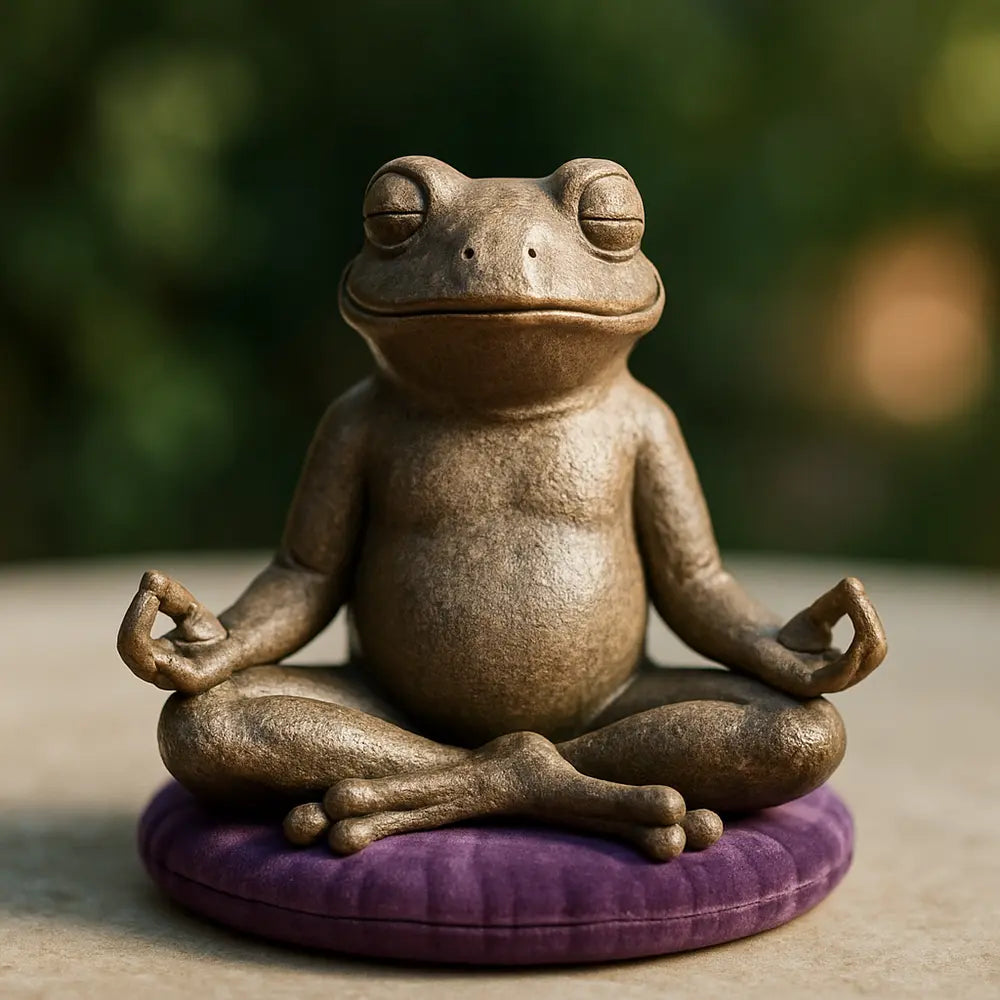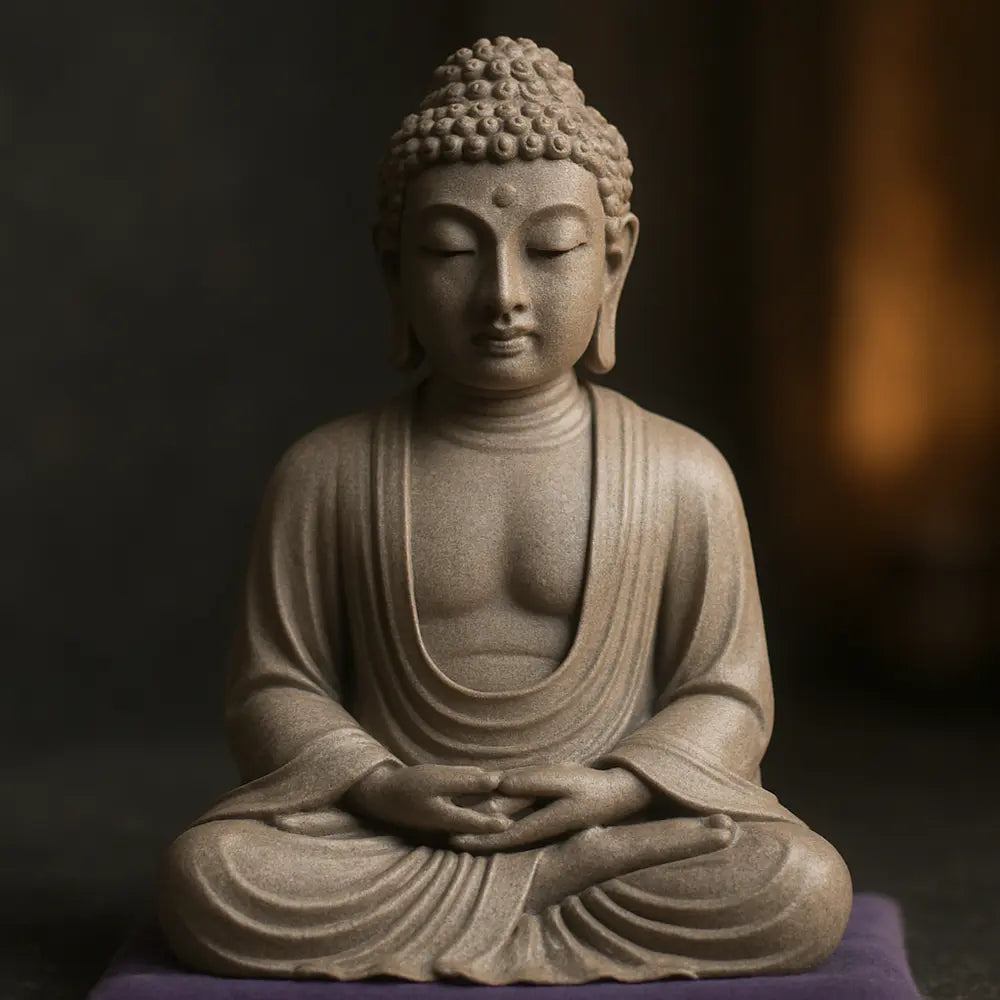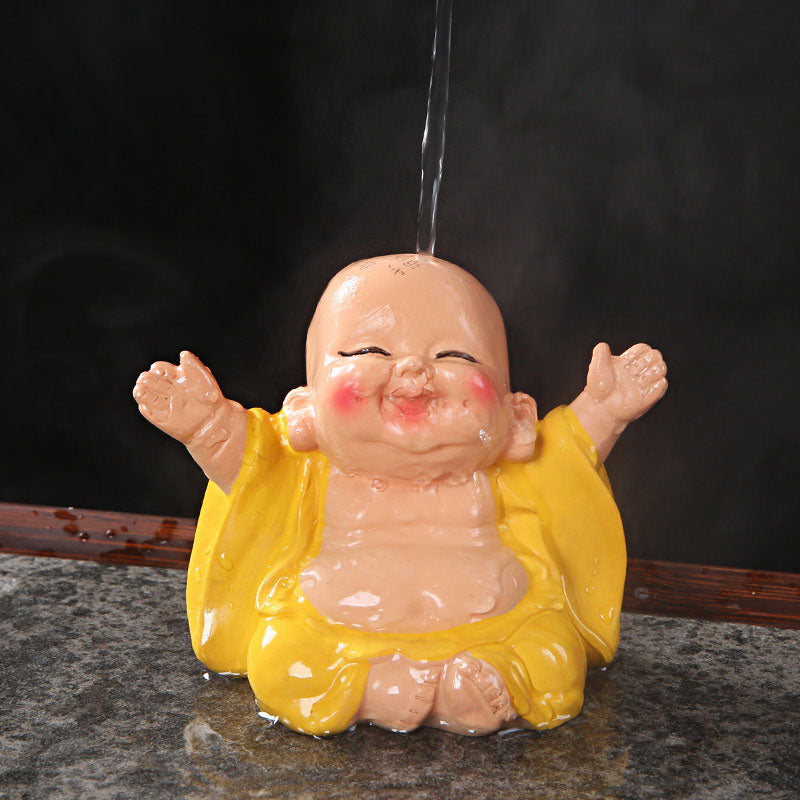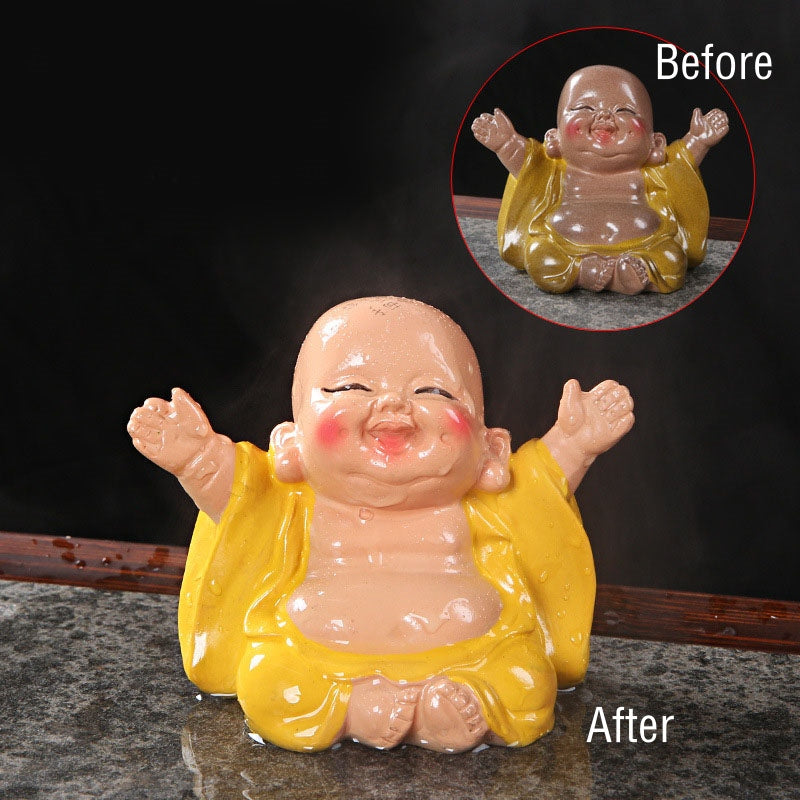
Laughing Buddha Statues
5 products
Showing 1 - 5 of 5 products
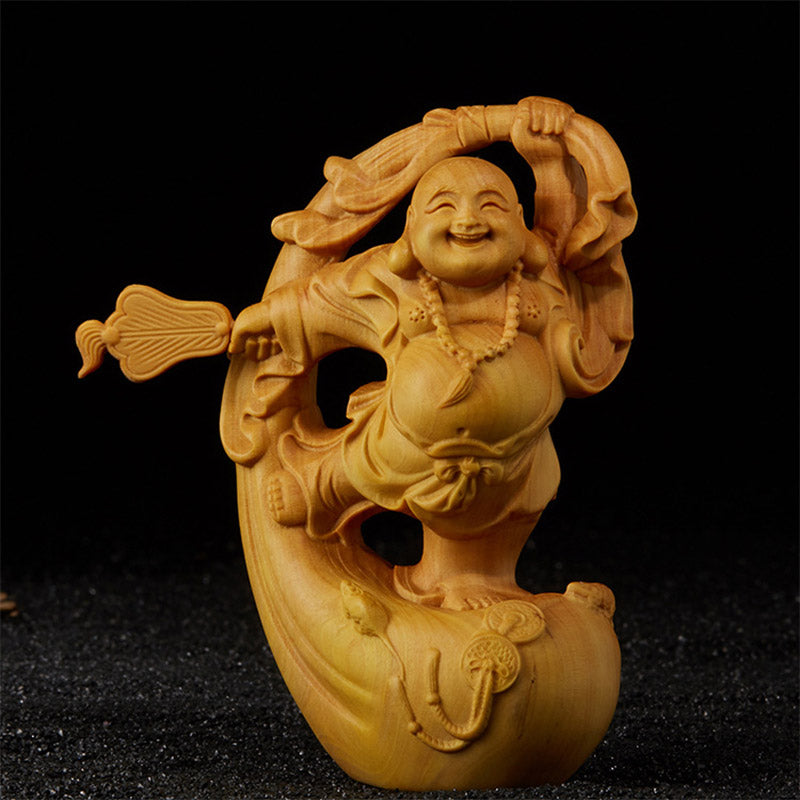
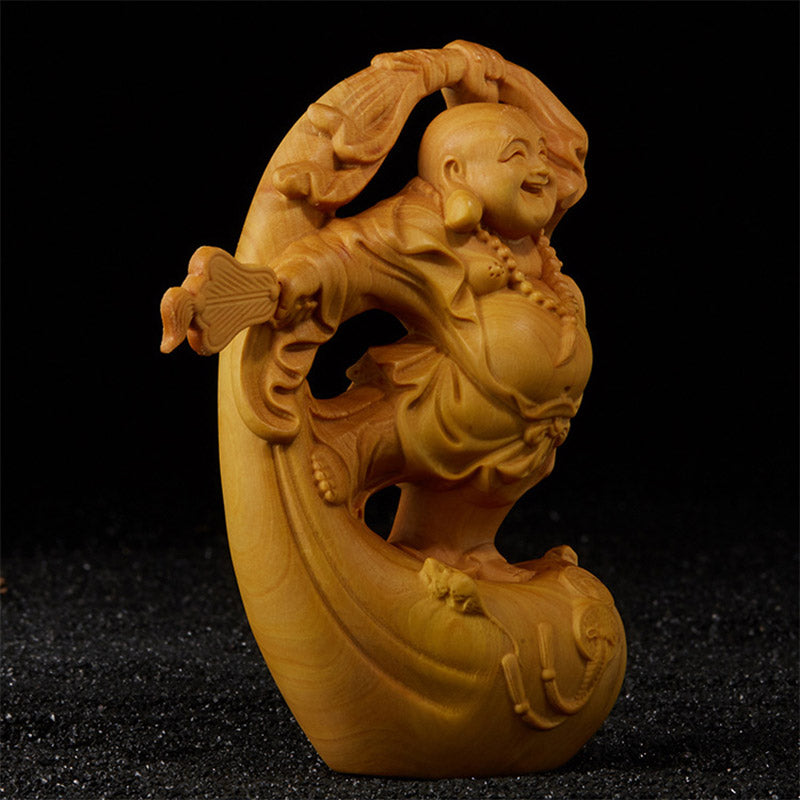


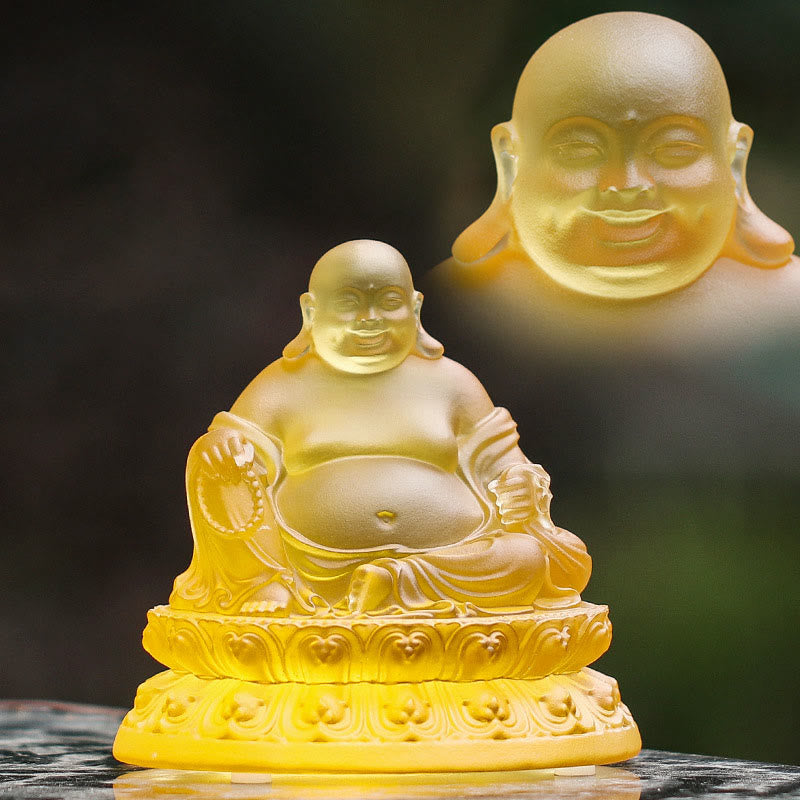

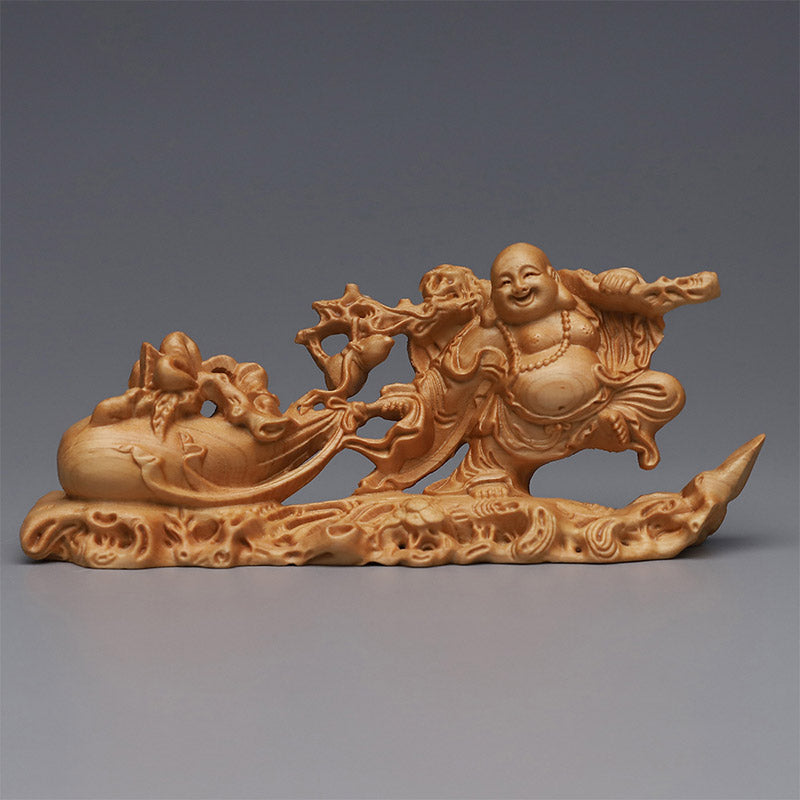
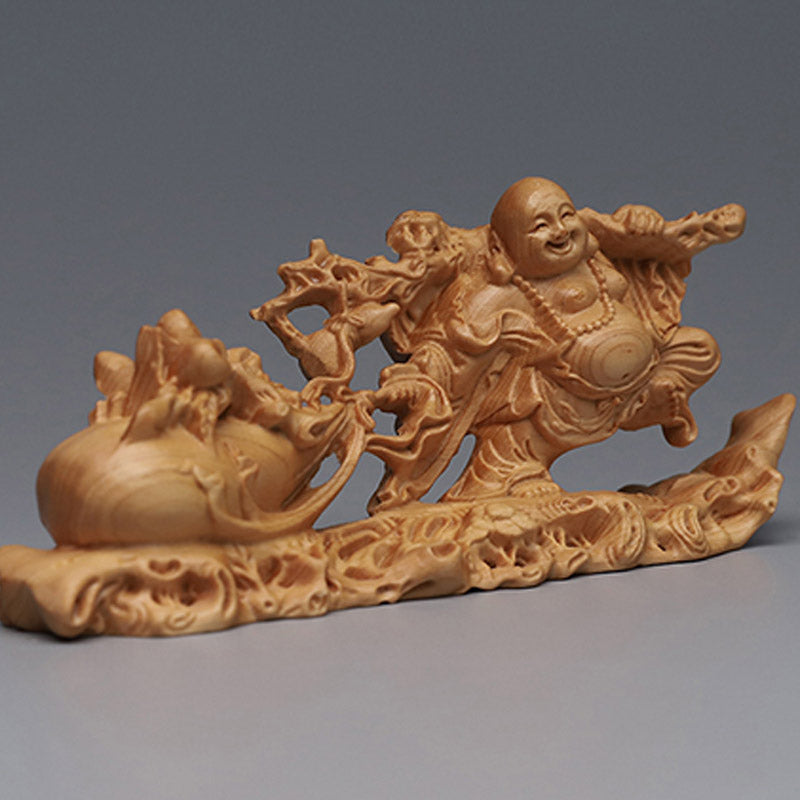
Invite boundless joy, prosperity, and a sense of uplifting contentment into your life with a Laughing Buddha statue from Healing Sounds. Each figure in this cherished collection is more than mere decor; it's a beacon of happiness and a traditional symbol of good fortune, designed to infuse your surroundings with positive energy.
Our selection of Happy Buddha statues captures the essence of this beloved deity, known for his magnanimous smile and joyful demeanor, promising to be a delightful and meaningful addition to any space.
The Enduring Charm and Meaning of the Laughing Buddha Statue
The Laughing Buddha, or Budai (Hotei in Japan), is one of the most recognized and beloved figures in Eastern folklore and Feng Shui. He is not Gautama Buddha, the historical founder of Buddhism, but rather a Chinese Zen monk who lived in the 10th century, revered for his jovial nature, eccentric ways, and compassionate heart. The laughing buddha symbolism is rich and multifaceted, primarily centering on happiness, abundance, and the relief of suffering.
His prominent belly and joyous smile are iconic, representing contentment, generosity, and the idea that one can find happiness even in simplicity. It's believed that rubbing his belly brings wealth, good luck, and prosperity. The laughing buddha meaning extends to various aspects of life, depending on the specific pose and the items he carries.
A smiling buddha statue meaning often includes attracting positive chi (life force energy), warding off negativity, and fostering a harmonious environment. He is a powerful emblem of good luck home decor, often sought by those wishing to enhance their well-being and invite fortune into their lives.
Unpacking the Symbolism Further
Different representations of the Laughing Buddha carry distinct nuances. For instance, a laughing buddha with ingot or gold coins is a potent symbol for attracting wealth and financial success. If he carries a sack or bag, it can signify collecting people's woes and troubles, transforming them into happiness, or it can represent the abundance of good things he brings.
Some statues depict him with children, symbolizing blessings for a happy family and fertility. Others show him with a fan, which is said to ward off misfortune, or a Wu Lou gourd, associated with good health and longevity. The prosperity buddha aspect is almost universally recognized, making these statues a popular choice for businesses and homes alike.
Understanding these subtle differences can help you choose a laughing buddha statue that resonates most deeply with your personal intentions and aspirations. Each detail, from his posture to his accessories, contributes to the overall energetic impact of the statue.
Choosing Your Ideal Laughing Buddha Statue for Home
Selecting the perfect laughing buddha statue for home involves considering its placement, the energies you wish to cultivate, and how it will harmonize with your existing decor. Whether for indoor tranquility or outdoor serenity, the right statue can significantly enhance the ambiance of your space.
When integrating a feng shui laughing buddha, placement is key. Traditionally, placing him in the living room, facing the main door, is believed to welcome positive energy and greet all who enter with joy. For students or those seeking academic success, placing a smaller statue on a desk can be beneficial.
The laughing buddha statue vastu principles also offer guidance, often aligning with Feng Shui in promoting positive energy flow. It's generally advised to place the statue at a height of at least 30 inches and to treat it with respect, avoiding placement in bathrooms, on the floor, or in bedrooms if seeking to maintain a more sacred or focused energy for those areas.
Indoor versus Outdoor Placement Considerations
A laughing buddha statue for home can be a source of joy both inside and outside. Indoor statues are often crafted from more delicate materials and can be placed in living rooms, studies, or reception areas of businesses. They serve as a constant reminder of happiness and abundance within your personal sanctuary.
A laughing buddha outdoor statue, on the other hand, needs to be more robust, made from materials that can withstand the elements like stone, resin, or specially treated metals. Placed in a garden, on a patio, or near an entrance, an outdoor Laughing Buddha can extend its benevolent influence to your external environment, creating a welcoming and prosperous atmosphere.
Regardless of whether you choose an indoor or outdoor setting, ensure the statue is treated with reverence. A clean, respectful placement enhances its symbolic power and the positive vibrations it emanates. Many believe that interacting with the statue, such as rubbing its belly daily, activates its good luck properties.
Discovering Materials for Your Happy Buddha Statue
The material of your happy buddha statue contributes not only to its aesthetic appeal and durability but also to its energetic properties. Healing Sounds offers statues in a variety of materials, each with its own unique charm and significance. Popular choices include jade, wood, metal, and resin.
A jade laughing buddha statue is highly prized. Jade is a stone associated with purity, harmony, and good fortune in many Eastern cultures. It's believed to possess protective qualities and to promote emotional healing. The cool, smooth feel of jade adds a tactile dimension to the statue's presence.
Similarly, a wood laughing buddha statue or a wooden laughing buddha offers a connection to nature and grounding energy. Different woods carry different symbolic meanings, but generally, wood represents growth, vitality, and warmth. Carved wooden statues often have intricate details and a rustic charm.
Exploring Metal, Resin, and Other Options
Metal statues, such as those made from bronze, brass, or copper, are known for their longevity and substantial feel. These materials can conduct energy and are often associated with strength and resilience. A gleaming metal Laughing Buddha can make a striking statement piece.
Resin statues offer versatility in design, color, and finish. They can accurately replicate the look of more expensive materials like stone or metal but are often more lightweight and affordable. This makes them an excellent option for various settings, including a laughing buddha outdoor statue if specifically formulated for weather resistance.
You might also find statues in ceramic, stone, or even a vibrant red laughing buddha, which is particularly auspicious for attracting prosperity and good fortune in Feng Shui, as red is a color of power, luck, and vitality. The choice of material should align with your personal preference, the intended placement (indoor vs. outdoor), and the specific energies you wish to invite.
Exploring the Diverse Types of Laughing Buddha Statues
There are many different types of laughing buddha statues, each with unique postures, accessories, and symbolic meanings. Understanding these variations can help you select a statue that perfectly aligns with your intentions, whether it's for wealth, happiness, protection, or spiritual growth.
One common type is the Laughing Buddha holding a sack or cloth bag. This bag is often interpreted as containing precious items, such as candies for children, rice (symbolizing abundance), or even all the woes of the world, which he compassionately collects. Another popular depiction is the laughing buddha with ingot (a traditional Chinese gold or silver currency), which directly symbolizes wealth and prosperity. This is a favored buddha for wealth and fortune.
The Laughing Buddha with a fan (Oogi) is believed to ward off negativity and misfortune, sweeping away troubles. Statues showing him with children, often five, represent blessings for a large and happy family, as well as good fortune descending from heaven. A buddha hands up statue, where the Laughing Buddha has both hands raised, often holding a pearl or ingot, signifies exuberant joy and the uplifting of blessings.
Postures and Their Meanings
The posture of the Laughing Buddha also carries significance. A seated Buddha often represents tranquility, balance, and the grounding of happiness. A standing Laughing Buddha can symbolize bringing wealth and happiness into one's life more actively.
Some statues depict him meditating, reminding us of the importance of inner peace and contentment. Others show him carrying a Wu Lou (gourd), a symbol of good health and longevity. The chubby buddha statue, with his characteristic large belly, is a constant reminder of magnanimity, abundance, and the joy of living.
Exploring these different types allows you to find a happy buddha figurine that not only appeals aesthetically but also resonates deeply with the specific blessings you are seeking to invite into your life. Each variation offers a unique facet of his benevolent energy.
Selecting the Perfect Size Laughing Buddha Statue
The size of your laughing buddha statue is another important consideration. Healing Sounds offers a range of sizes to suit different spaces and intentions, from small figurines perfect for a desk or altar to larger statement pieces for a living room or garden.
Smaller statues, perhaps just a few inches tall, are ideal for personal spaces. They can be placed on a work desk to invite prosperity and reduce stress, or on a bedside table (though some traditions advise against placement directly in the bedroom for certain intentions). These small statues are also great for incorporating into a larger collection of spiritual items or for those with limited space.
Medium-sized statues, ranging from 6 to 12 inches, are versatile and can fit well in most home environments. They are substantial enough to make an impact but not so large as to overwhelm a room. These are often chosen for prominent display in living areas or entryways.
Larger statues, exceeding 12 inches, can become a focal point in a room or garden. A significant laughing buddha outdoor statue can create a powerful presence, radiating joy and abundance throughout your outdoor space. When choosing a larger statue, ensure it is proportional to the area where it will be placed to maintain a sense of balance and harmony.
Ultimately, the "right" size depends on your personal preference, the available space, and the degree of visual impact you desire. Even a small, respectfully placed happy buddha statue can bring immense joy and positive energy.
The Healing Sounds Promise for Your Sacred Space
At Healing Sounds, we understand that a laughing buddha statue is more than just an object; it's a conduit for positive energy, a symbol of profound spiritual concepts, and a companion on your journey towards greater happiness and abundance. That's why we carefully curate our collection, ensuring each happy buddha figurine embodies authenticity and quality.
Our commitment extends to sourcing statues that are not only aesthetically pleasing but also crafted with intention. We believe in the power of these sacred symbols to transform spaces and uplift spirits. Whether you are seeking a jade laughing buddha statue for its healing properties, a wood laughing buddha statue for its natural warmth, or a vibrant statue to energize your home, we strive to offer pieces that resonate with your spiritual path.
We invite you to explore our collection of Laughing Buddha statues and find the perfect representation of joy, prosperity, and contentment for your sacred space. Let the benevolent smile of the Laughing Buddha fill your life with light and laughter.
Embrace the cheerful energy and abundant blessings offered by these timeless symbols. Each laughing buddha statue in our collection is chosen to inspire and uplift, helping you create a sanctuary of peace and prosperity within your home or workplace.
Frequently Asked Questions about Laughing Buddha Statues
A Laughing Buddha statue primarily symbolizes happiness, joy, contentment, and abundance. He is also associated with good luck, prosperity, and the removal of obstacles or suffering. His large belly represents magnanimity and the capacity to hold and transform negativity into positive energy. Different poses and items he carries can add further layers of meaning, such as wealth (ingots), health (Wu Lou gourd), or family blessings (children).
There are many different types of Laughing Buddha statues. Common variations include:
- With a Sack: Symbolizes collecting worries or carrying treasures and abundance.
- With Gold Ingots or Coins: Represents wealth, financial prosperity, and good fortune.
- With a Fan (Oogi): Believed to ward off misfortune and negative energy.
- With Children: Signifies blessings for a happy family, fertility, and good luck for descendants.
- With a Wu Lou Gourd: Associated with good health, healing, and longevity.
- Hands Up (often holding a pearl or ingot): Represents uplifting joy, blessings, and success.
- Meditating: Emphasizes inner peace, contentment, and spiritual calm.
The specific items and posture help tailor the statue's energy to particular intentions.
The best Laughing Buddha statue for home depends on your personal intentions. If you seek wealth and prosperity, choose one with gold ingots or coins. For overall happiness and family well-being, one with children or a joyful, simple pose is excellent. Consider a Laughing Buddha with a fan for protection against negativity. Always choose a statue whose appearance brings you joy and resonates with your aspirations.
Laughing Buddha statues are crafted from a variety of materials. Common options include jade (symbolizing purity and good fortune), wood (for natural, grounding energy), metal (like bronze or brass, for durability and strength), and resin (offering versatility in design and affordability). You may also find them in ceramic, stone, or even glass. The choice often depends on aesthetic preference, budget, and intended placement (e.g., weather-resistant materials for a laughing buddha outdoor statue).
Laughing Buddha statues come in a wide range of sizes. You can find small figurines, just a few inches tall, perfect for desks, personal altars, or small shelves. Medium sizes (6-12 inches) are versatile for most home settings. Larger statues, exceeding a foot or more, can serve as significant focal points in a room or garden. The ideal size depends on your available space and the visual impact you desire.
Indoors: A popular spot for a laughing buddha statue for home is the main living area or hall, ideally facing the main entrance to welcome positive energy. It can also be placed in a study or office for career luck. Avoid placing it directly on the floor, in bathrooms, or in bedrooms if following strict traditional guidelines.
Outdoors: A laughing buddha outdoor statue can be placed in a garden, near the front entrance, or on a patio. Ensure it's made of weather-resistant material. The aim is to spread joy and auspicious energy to your external surroundings. Always choose a respectful, clean location.
For Feng Shui, place your laughing buddha statue in the East (for family harmony and health) or Southeast (for wealth). Facing the main door is common to attract positive Chi. For Vastu, placing him in the Northeast corner (Ishan corner) is considered auspicious for prosperity and peace. He should generally face the East or the main entrance of the house. Ensure the statue is placed at a respectful height, not on the floor, and kept clean.
Yes, there are several traditions. Treat the statue with respect: don't place it on the floor, in a bathroom, or kitchen. Ideally, it should be at eye level or higher. Many believe rubbing his belly daily activates his good luck and prosperity-bringing qualities. Keep the statue and its surroundings clean. It's a symbol of joy and abundance, so interact with it positively. While not strict "rules," these practices are believed to enhance its beneficial energies.
Continue your journey into the world of sacred adornments and spiritual tools by exploring our wider collection. Browse our complete collection of Statues & Figurines for more inspiration.


